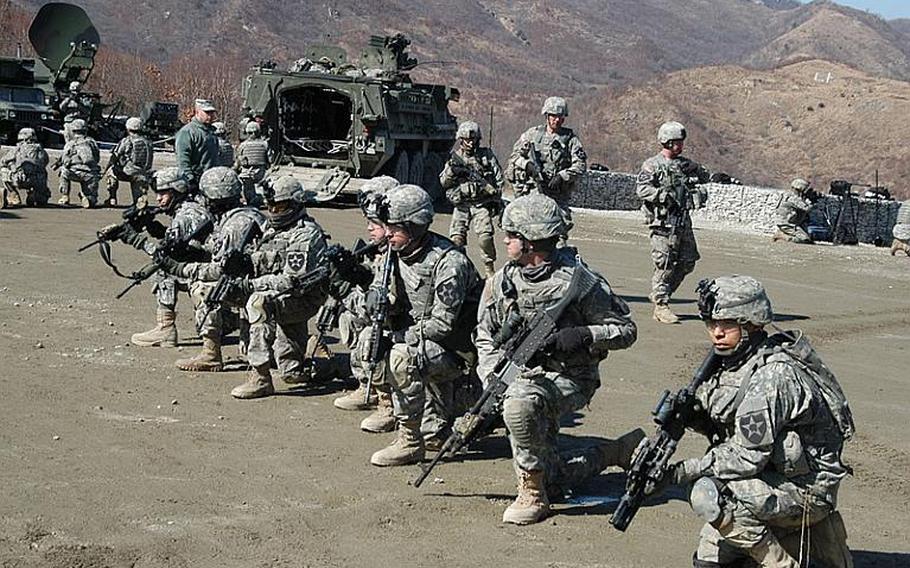Asia-Pacific
Exercises provide dry run for S. Korean wartime control of forces
Stars and Stripes February 21, 2013

Soldiers line up after exiting four Strykers brought to South Korea for the annual Foal Eagle/Key Resolve live-fire drills near the Demilitarized Zone in March of 2011. (Jon Rabiroff/Stars and Stripes)
SEOUL — Officials announced plans Thursday for the largest annual joint exercises for U.S. and South Korean troops, which will provide a dry run for the planned U.S. handover of wartime operation control of the allied forces.
About 13,500 U.S. troops will participate in the Foal Eagle exercise March 1-April 30 or the Key Resolve exercise March 11-21.
It will be the first time that Key Resolve will be led by the South Korean Joint Chiefs of Staff and not the U.S.-led Combined Forces Command.
“This will help improve the (South Korean) military’s operational command capabilities and establish a basis for the wartime operations control transition,” according to a U.S. Forces Korea release.
Opinions have differed for years on whether the South Korean military is up to the task of leading the fight should hostilities with North Korea resume.
The transfer of responsibility was supposed to happen in 2007 but was pushed to 2012. The date was postponed again in 2010 to the current target of 2015 in the wake of criticism of the South’s response when North Korea sank one of its warships.
Last year, a Pentagon-commissioned study by the Center for Strategic and International Studies suggested that the U.S. military take steps to cover for perceived shortcomings in the South’s ability to defend itself, including delaying the 2015 OPCON transfer until South Korea’s military is better prepared to assume the responsibilities.
Defense Secretary Leon Panetta, in a letter accompanying the report when it was submitted to the Senate Armed Services Committee, said the transfer will go through only if South Korea meets “a series of planning milestones … to ensure that wartime OPCON transition occurs ... with no loss of readiness of our combined forces.”
The Key Resolve exercise will involve about 10,000 South Korean troops, 3,500 U.S. servicemembers and representatives of the militaries of United Nations Command members Denmark, Australia, Colombia, Canada and the United Kingdom, along with supervisors from the Neutral Nations Supervisory Commission.
The command-post exercise will include scenarios to defend the Korean Peninsula “through improving (South Korean)-U.S. combined forces’ operation capabilities, coordinating and executing the deployment of U.S. reinforcement forces and maintaining (the South Korean) military’s combat capabilities,” the USFK statement said.
Foal Eagle will involve 20 separate but related field training exercises “spanning ground, air, naval, expeditionary and special operations,” the statement said.
About 10,000 U.S. troops will participate in Foal Eagle, most from outside South Korea. As many as 200,000 South Korean troops traditionally participate in one or more elements of Foal Eagle.
The U.N. Command Military Armistice Commission notified the North Korean military Thursday about the dates for the exercises, advising that they are defensive in nature and not related to “the current situations on the Korean Peninsula.”
Despite those assurances, the annual announcement of the exercises prompts North Korea to issue provocative threats about its response to what it deems to be war preparations by the U.S. and South Korea.